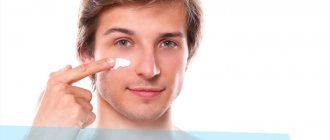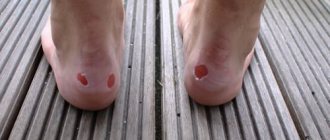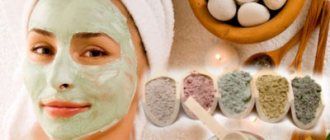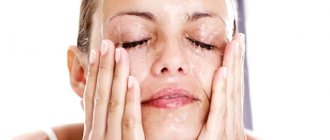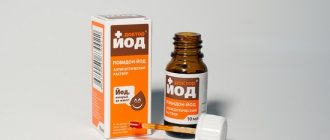High-quality and regular skin care on your heels is necessary if you want to maintain the beauty of your entire body. Agree, if the skin on the heels is rough, yellow, and covered with cracks, then such legs can hardly be called beautiful. Especially if you are a woman.
This problem can be easily dealt with in any beauty salon, but you don’t always have the necessary money and time to afford the services of professionals. Therefore, below you can find home methods for dealing with hard skin on your heels, which will help you make them soft and neat.
Making the skin on your heels smooth and soft
Under no circumstances should you cut off rough areas of skin with a razor if you are caring for your heels yourself. This can cause serious damage to the skin, damage your heels, and in the cut areas another layer of hard skin will very quickly grow, which will be even thicker and rougher.
Regular foot baths are your best helpers in the fight for smooth heel skin at home.
Here is the easiest recipe: pour warm water into a basin and add 1 glass of milk and 1 glass of thick liquid soap, 3 tbsp. spoons of table salt and mix all ingredients. Dip your heels into this solution and hold for about 30-40 minutes. Then use a soft pumice stone to gently rub the steamed area of skin and remove the top layer of skin. After this, remove your feet from the basin, wipe them dry and lubricate the skin of your heels with a special nourishing cream.
With regular use, this bath will relieve the problem of rough skin for a long time.
You can change the composition of the bath, for example, make it herbal or soap and soda.
There is a special scrub for heels that can also clean rough areas of the skin, but it should be chosen depending on your skin type. The scrub should be used as follows: apply the scrub to a flat pumice stone or a special oval file for grinding and begin to massage the skin of the heels with light movements, however, in order not to damage it, make sure that the procedure takes no more than 3 minutes and do not repeat it more than once in Week.
How to get rid of cracked heels in a salon?
After you consult with your doctor and make sure that the cause of your problem is not a skin disease, you can safely contact a cosmetologist or pedicurist who can correct the situation in a few sessions and give you smooth and soft heels.
Today, the cosmetology industry can offer you the following types of struggle for beautiful skin on your feet.
| Name of the salon procedure | Description |
| Classic trim pedicure | This type of pedicure consists of first soaking your feet in a bath, and then using special graters, pumice stones, machines and cutters to remove the rough layer of skin. The bath can be either ordinary or hydromassage; it can contain various extracts of herbs and useful components. After the skin has softened sufficiently, the master removes all the rough layers with a special cutter, and additionally moisturizes and nourishes the feet with creams and ointments. After this type of pedicure, clients instantly receive smooth, thin skin on their heels. But this procedure is fraught with the fact that after it, rough skin reappears much faster. This happens for the reason that, along with dead skin, a layer of fresh skin is removed, and it begins to regenerate faster and grow again. In addition, just such a classic pedicure can cause infection with various diseases, such as fungus, because water and damp, steamed skin can become an excellent place for bacteria to multiply. |
| European pedicure | In principle, it is not much different from a classic pedicure, except that they use more gentle files and pumice stones, which are not so aggressive on the skin. As a result, the number of procedures increases, but the disadvantages of the procedure remain the same. |
| Hardware pedicure | The technology for removing dead skin is fundamentally different from the above, primarily in that the procedure is performed on dry skin. This means that the risk of removing a layer of living epidermis is minimal. At first, it seems that such a pedicure is ineffective, because its full result can only be seen after several sessions. It consists of using a grinding machine with different attachments to remove dead skin using a dry method. |
In addition to the listed methods, the action of which is directly aimed at polishing and removing roughness and dead skin, various salon methods can help you in the fight against cracks, such as, for example, paraffin therapy and spa treatments. The action of these methods is aimed at increasing the elasticity of the skin, nourishing it with useful substances and preventing dehydration.
Getting rid of rough skin on the heels
You cannot allow a situation to arise when the top layer of skin becomes covered with small, unpleasant cracks and loses its firmness and elasticity. If you do nothing, this can lead to serious complications, the fight against which will be much more difficult. To prevent this, it is necessary to carry out corrective cosmetic procedures. For example, you can make a mask from egg yolk, potato starch and lemon juice, or a lotion from marshmallow root.
The lotions are prepared as follows. You need to mix 2 tbsp. spoons of finely chopped marshmallow root with 0.5 liters of water and bring to a boil, then leave in a water bath for half an hour, stirring occasionally. After that, cool the broth and put gauze compresses soaked in it on the heels for about half an hour. Repeat the procedure approximately 2-3 times a day until you achieve the desired result.
A mask of yolk, starch and lemon juice also has an excellent softening effect. To prepare it, mix egg yolk, lemon juice (1 teaspoon) and potato starch (1/2 teaspoon). Apply all this to the skin of your heels until the mixture hardens, then rinse and lubricate your heels with a special moisturizer.
Cosmetic blue clay will help you always have tender, soft heels. It needs to be diluted with water to a creamy state and applied to the feet.
Aloe juice has a wonderful softening effect. Its stems should be finely chopped, then crushed to a paste, applied to the heels, secured with a bandage or film, put on warm socks on top and leave this mask overnight. The result will be noticeable in the morning! Instead of aloe, you can also use an apple, finely grated. The recipe for applying it is identical to the one that uses aloe juice.
If after baths you rub olive oil or olive pulp into your heels every day, you will soon notice that they have become soft and tender.
Fir and eucalyptus oils improve blood circulation and have an incredible smoothing effect, so they are ideal for your heels.
After baths, it is also recommended to apply banana and honey masks. Take 1 banana, mash it, add a small amount of honey and apply a thin layer on your heels. Wrap the top with film and put on warm woolen socks. After half an hour, the mask can be washed off, after which the cream should be applied.
If the skin on your heels quickly dries out, cracks and itches, avoid regular exposure to sunlight and water, and before sunbathing or water procedures, apply a moisturizer that will protect your heels. In addition, dry and cracked heels sometimes indicate the presence of a fungus, which should be treated by a doctor.
For rough and flaky heels, the best way to restore is a compress of onion halves. Place the scalded onion halves on your heels after the baths, cover with plastic wrap, bandage and leave overnight. The next morning, everything is simply washed off with water, the skin can be rubbed with a pumice stone or a rich nourishing cream can be rubbed in. Despite the smell, this compress is very effective, because after just a few procedures your heels will become neat, soft and pleasant to the touch.
Warm starch baths effectively make the skin of the feet soft and tender. After using them, rough areas of skin are simply cleansed with corn oil or a rich cream. To apply the heel, lubricate the heel with a thick cream (corn oil will also work) and cover the top with plastic wrap and bandage it overnight. In the morning, take a foot bath, then treat your skin with fine pumice.
Why do skin lesions occur?
The causes of cracks in the feet vary. Doctors divide them into two main groups:
- Physiological;
- Medical.
Physiological reasons are the most common. Men pay attention only to clothes. Socks can be made from non-natural materials. Wearing synthetic socks for a long time leads to increased moisture in the foot area. The skin experiences temperature changes. Loss of moisture increases dryness of the skin and leads to the formation of cracks on the feet.
The stores offer a huge selection of shoes for men. Fabrics and materials for making shoes are varied. Problems may arise when wearing shoes made from non-natural materials. Artificial suede and leather do not allow oxygen to reach your feet. Feet begin to sweat. Sweat does not evaporate when wearing shoes for a long time. The skin of the feet begins to swell. After a few days, a wound or crack appears on the foot.
Improper nutrition provokes pathological changes in the epidermis of the entire body. Fatty foods, excess consumption of fast food, and various spicy dishes have a detrimental effect on the condition of the skin. Eating junk food for a long time leads to a significant loss of moisture from the dermis, dryness and flaking appear. The delicate skin of the feet reacts to this by the appearance of wounds.
Frequent visits to swimming pools or public saunas also lead to problems. Various chemicals are used to disinfect pool water. Chlorine-containing products are often used. Such drugs lead to loss of moisture from the epidermis of the entire body. If you do not follow the rules of personal hygiene, you can get complications in the form of cracks, wounds or fungal diseases.
Medical reasons
Medical reasons must be considered separately. There are many diseases that affect the patient's skin condition. These include the following pathologies:
- Fungal infections of the feet;
- Diabetes;
- Hormonal disbalance;
- Endocrinological diseases;
- Injuries.
A popular cause of cracks is fungal infection of the foot. The microorganism can settle in the skin for various reasons. The fungus is a parasite that feeds on the epithelium. Long-term infection with fungus affects the condition of the skin and nails. If the problem is not treated, the nails are completely destroyed, the skin becomes rough and dry.
Diabetes mellitus causes dry epithelium. This is especially true on the legs. In medicine there is a concept - “diabetic foot”.
When a person is affected by diabetes, the skin of the foot begins to actively grow. New epithelium is layered on dead cells. A growth in the form of dry tissue appears on the foot. When walking, the growth may crack. A wound appears on the damaged area. Diabetic wounds heal slowly. This is due to a disorder of hematopoiesis. Leukocytes do not have time to cover the wound surface, and the affected area increases. Cracks in diabetes are treated with special compounds.
Hormonal imbalance and endocrine diseases lead to similar complications. In a man, the work of the sweat glands and the circulation of lymph under the skin are disrupted. Stagnation of lymphatic fluid disrupts skin nutrition. The blood cannot deliver the required amount of oxygen to the tissue. Cracks appear at the site of atrophied tissue.
Wounds and cracks can appear as a result of injury to the epidermis. Men may puncture, cut or scratch the skin of their feet. Treatment must be timely, as there is a danger of infection by pathogenic microorganisms.
Traditional methods of heel care
Remember that your heels need regular moisturizing. Fruit and vegetable masks that are great for your face will also be great for your heels.
Zucchini mask
Zucchini pulp will help cure rough heels. Grate the vegetables, apply the resulting paste to the rough areas of the skin of your heels for 30 minutes, then rinse off the mask and use a nourishing foot cream. After a few procedures, your heels will become smooth.
Apricot mask
Mash the apricots and pour a little olive oil into the resulting pulp, then heat the mixture over low heat. Apply the mask while warm to the skin and secure with film and bandage. Put woolen socks on top and leave for half an hour. After this, rinse off the mask with warm water and lubricate your heels with nourishing cream.
Wine bath
White wine baths are great for treating cracked heels. For prevention, they can be done only once a month. Heat 200 ml of white wine, add 1 tbsp. spoon of linden blossom powder and boil the mixture for several minutes. After this, it needs to be cooled and poured into a small container. Dip your heels in the broth for 10 minutes, then rub them with a washcloth and put them in the bath again for the same time. After the first procedure you will feel a great result.
Herbal decoctions for heels
The best and most affordable of the many medicinal herbs for your feet are green tea, peppermint, chamomile, and string. The best ways to use them are hot wraps, warm baths or lotions. Regardless of which heel care method you use, your heels should be lubricated with a rich cream at the end of the procedure.
Masks with essential oils
Mix 2 tbsp. tablespoons of essential oil of sea buckthorn, avocado or add 5 drops of cypress, chamomile and pine essential oils. Before going to bed, rub this mixture into your heels and put on cotton socks.
You can make a cream with the addition of essential oils. To do this, add 4-5 drops of lemon and pine essential oils to a teaspoon of baby cream, or, if you don’t have such oils, you can replace them with cypress, cedar, chamomile or lavender oils. Rub the resulting cream into your heels about 2 times a day.
As you can see, caring for your heels at home is not an option. If you remember about your heels and take care of them regularly, you can be sure that any open shoes will only highlight the beauty of your feet and will not become “forbidden fruit” for you!
Cleaning with peroxide
A regular solution of hydrogen peroxide, which can be purchased at a pharmacy for a small fee, will help remove rough skin on the heels, but this method is more suitable if the heels are not severely damaged. When the skin is only slightly roughened, you can take a cotton swab and moisten it with this solution, then use the swab to wipe the skin on the heel area.
It is worth remembering that it is necessary to dilute peroxide with water in order not to cause undesirable consequences; to do this, you need to take at least six parts of water to one part of peroxide.
The procedure lasts about five minutes, during which time the roughness will become softer and more pliable. As soon as the procedure is completed, you can learn how to clean your heels of rough skin; to do this, just take a special large scrub or pumice stone, and then treat your heels with these products.
When it is necessary to choose a more effective means for cleaning heels, you can pay attention to a solution prepared from peroxide for a bath. Take four tablespoons of hydrogen peroxide, as well as one and a half liters of hot water, the composition should be hot enough, lower your feet into it for ten minutes to steam, and after that the heels are again treated with pumice or a special scrub.
It is very important to carry out the procedure correctly, if the rough areas are very neglected, then the duration of the procedure can be up to twenty minutes, but not longer than the specified time, since the composition dries the skin very much and can cause irritation of the skin on the feet. This procedure is carried out no more than twice a week, and after the procedure, the heels require special care; they must be softened and moisturized with a special cream.
If a girl is looking for a suitable way to clean her heels with baking soda from serious roughness, it is worth using exactly the method that was described above, as it shows very noticeable results.
After any procedure, you need to put warm natural socks on your feet; your feet should stay in them for at least two hours, and it is recommended to carry out the procedure itself in the evening, so that the skin has time to rest and the regeneration processes go faster.
If there are serious rough spots on the spots, you will have to carry out the cleansing procedure several times, especially in cases where there are calluses on the feet. When cracks form on the heels, it will not be enough to do such baths; you will have to additionally treat the affected areas of the feet with creams with a disinfecting, moisturizing and healing effect.
How to deal with rough skin on your heels?
All adults have experienced what rough skin on the heels is like at least once in their lives.
Unfortunately, many men and women pay attention to their soles only when their condition already leaves much to be desired and requires urgent treatment procedures. This is a huge mistake, because heels require constant attention and care. No less than the skin of the hands and face. Horny skin on the heels is just a disaster! Sooner or later, the skin begins to burst and become covered with painful cracks, which ultimately leads to very unpleasant consequences. And, strictly speaking, cracked, flaky, dry skin on the heels does not look very beautiful.
Cracked heels and calluses
Well, if you are worried about cracked heels and calluses, then we advise you to take a closer look at a product such as Foot Cream against cracks and rough skin.
- Urea (high percentage!) and lactic acid gently but intensively exfoliate rough skin, preventing the formation of corns and cracks.
- The combination of coconut, corn, flax oils, vitamins A, E and extracts of milk thistle, eucalyptus, plantain, yarrow provides active nutrition and hydration to dry skin of the feet, softens it and stimulates the rapid healing of cracks.
This remedy works! Don't believe me? Check it out and see for yourself!
The skin on the heels has become rough and the feet are sweating
Another problem is that the skin on the heels has become rough and the feet sweat. To solve this problem, we have KORA Foot Cream with mint and tea tree essential oils.
Its action:
- The cream softens rough skin. Over time, you will notice that your heels have become smooth thanks to Emu and flaxseed oil;
- It will have an anti-edema effect and give a feeling of lightness - horse chestnut extract improves microcirculation and reduces the permeability of the vascular wall;
- As a pleasant bonus, the deodorizing and toning effect - essential oils of mint and tea tree will have a bactericidal effect and pleasantly cool the skin.
Result: with regular use of the cream, the likelihood of roughening the skin of the feet and the occurrence of cracks is reduced, discomfort and heaviness in the legs go away, the skin becomes soft and smooth.
Homemade ointment recipe
At home, you can prepare an ointment for rough skin on the heels. One of the best remedies is considered to be a recipe with an egg. Lecithin, which is part of it, has a regenerating and wound-healing effect.
To prepare the ointment you will need a chicken egg. And also 70% vinegar essence and butter. The egg must be washed and placed in a glass container. Then fill it completely with essence. Leave for five days. During this time, the shell will dissolve.
After five days, use a spoon to transfer the egg to another bowl. Remove the shell that has turned into a film. Grind the egg itself with 200 gr. butter and add 30 ml of vinegar. Store the mixture in the refrigerator.
The ointment should be applied at night. Exclusively on areas with rough skin. Wrap your feet in polyethylene and put on socks. Use the product until the skin is completely restored.
Preventive measures
It is always easier to prevent a problem from occurring than to fight it. This also applies to dry feet. To ensure that your heels are always soft and smooth, you must follow these rules:
- Buy and wear only high-quality shoes of the appropriate size. It is advisable to choose socks only from natural materials;
- Take care of your feet regularly. Wash them daily, treat them with pumice and scrub once a week, sometimes make masks and baths, apply a nourishing and moisturizing cream in the evening;
- Include vitamins and foods rich in polyunsaturated fatty acids and beneficial microelements in your diet.
If you are still worried about such a nuisance as dry heels, you must not forget what to do at home in this case. The comprehensive use of heel skin care products will help heal them and soon forget about this inconvenience.
Ongoing treatments to maintain soft feet
You must remember:
- Foot socks must be made from natural fabrics better than cotton;
- You need to soak the skin in water without allowing the accordion effect;
- If there are cracks or wounds on your feet, do not use acidic ingredients;
- All these recipes are guaranteed to make your skin soft, but for this you need to do the procedures regularly.
Homemade bath to soften feet using soda:
You will need a product common in our kitchens - baking soda! Add 4 tablespoons of baking soda to warm water and soak your feet in this solution for about half an hour (the skin should steam, but not shrink). After steaming, apply patchouli or sandalwood essential oil.
For maximum benefits, you can add bath salts (sea salts). Salt helps soften the skin and relax the muscles.
Repeat this procedure regularly! Sea salt with lavender extract is especially relaxing; this steaming before bed will allow you to completely let go of your thoughts and fully relax. Rub your legs with your hands to circulate the blood and relieve fatigue. You will immediately feel light, especially after a day spent in heels.
Banana puree mask for feet and heels (softening):
Banana is a tropical fruit that boasts a number of health benefits. It will also help cure rough skin on your feet.
Grind a ripe banana with a blender (or fork), add a tablespoon of honey to the puree and apply the resulting banana pulp evenly on your feet. Let it dry for 10-5 minutes and then rinse with warm water. Apply nourishing cream 20 minutes after the mask. Carry out this procedure once a week, preferably before bed, and get the desired result - soft heels.
Daily cleansing procedures (heel polishing):
It is very important to regularly practice simple hygiene practices, such as scrubbing your feet with a buffing grater. This will prevent dead skin from accumulating on your feet and will also protect your skin from drying out and flaking. This procedure will take no more than 6 minutes for both feet, but it is thanks to it that the skin will become smooth.
All you need is to rub your feet while showering with a grater (before treating your heels, apply liquid soap or shower gel to the grater, this is mandatory). The hardness of the grater-polishing should not be higher than 100/180 grit. Once you're done, let your feet dry and moisturize them well with cream.
Wearing socks during sleep will help maintain the nourishing effect of the cream.
Foot massage with olive oil to soften:
Olive oil is an excellent moisturizer, especially for dry skin. To use olive oil, your feet must be clean. The easiest way is to dip a cotton ball in olive oil and apply it to the rough areas. Gently massage your feet in a circular motion to restore blood circulation. Once you're done, put on the wrap and a pair of warm socks on top and let your skin absorb the oil. After an hour, rinse your feet. Massage your feet with olive oil every other day.
For maximum benefits, leave the oil on overnight (but use it without film for no more than an hour; you shouldn’t soften your feet too much) and wash off the next morning.
We use vinegar to steam out old skin on the feet:
IMPORTANT! This method is only suitable if you have very dry skin WITHOUT CRACKS.
Dissolve 5 tablespoons in warm water, use only apple cider vinegar; its texture is more delicate. Soak your feet in this bath for no more than 10 minutes, and then be sure to apply the cream liberally and let it absorb (without socks). This procedure is not for every day; soften the skin of your heels with this bath 2-3 times a week.
Peppermint for dry feet:
Apply a small amount of peppermint oil to clean feet every day before going to bed or some time before leaving the house in the morning. The antiseptic properties of the oil will not only make the skin smooth, they will give a pleasant smell and prevent bacteria from entering the skin throughout the day. The oil also reduces pain and discomfort.
This is one of the simplest home remedies to treat cracked and rough heels.
Exfoliating homemade foot scrub:
Treat your dry heels with this simple homemade scrub. It will remove the dead layer of skin. Make this scrub by mixing oatmeal with lemon juice, honey and sea salt.
- honey one and a half tablespoons;
- lemon juice - 4 parts lemon;
- oatmeal - half a glass;
- sea salt 1.5 tablespoons.
Keep the scrub on for 30 minutes and then rinse your feet with warm water. Moisturize your feet with mint oil after scrubbing.
Another homemade mask, honey and salt to moisturize and exfoliate the skin on the feet:
Honey has many healing properties and is an excellent product for the skin. Add salt to honey so that the mask has an exfoliating effect, the ratio of components is 1 to 1. Just distribute the mask over your feet and massage your feet, rinse as usual. After the procedure, you don’t need any cream or oil, just put on socks. Do this procedure every day for 10-15 minutes and say “bye” to dry heels.
The best natural moisturizer is milk:
The value of milk for the skin was felt by Cleopatra herself and many women in Egypt. Prepare a warm water bath with a cup of hot milk and 2 tablespoons of sea salt to open the pores. Keep your feet in it for a while. Do this not every day, but only once a week!
Soak your feet in warm water with iodine and salt:
Once or twice a week, soak your feet for 10 minutes in warm water with two tablespoons of sea salt and a tablespoon of iodine. Polish the skin with a grater and apply cream. Do this softening method once a week.
Caring for calluses on feet at home:
If you have problems with calluses or corns, use a small finger grater.
You will need:
- finger grater;
- remover (a professional product for softening corns and skin);
- oil to add to water (or honey);
- moisturizer (oily texture).
On dry skin, apply the remover to the roughest areas of the skin, hold for 5 minutes and immerse your feet in warm water with oil. Steam for 7-10 minutes and lightly rub them with a grater, rinse off the removed skin, dry your feet from moisture and apply cream (no need to wear socks). Repeat the procedure if corns appear, usually once every two weeks.
Toe hygiene - remove all excess with an orange stick:
Take an orange stick, steam your toes in a warm bath with aroma oil and sea salt to clean all the dirt from your toenails. Be very careful not to inject yourself. You can also use steel tools, but an orange stick is completely harmless. Use one stick only once.
Removing hangnails and cuticles:
Clean hangnails and cuticles quickly and easily with a cuticle remover. After you have steamed your feet and cleaned your nails, carefully remove, push back and cut off the cuticles with clippers. You don't have to push the cuticle to the base of the nail if it's very small.
Trim your nails regularly:
You should trim your toenails at least once every two weeks. Long toenails are not very hygienic and even unsafe, since they can push against shoes and deform their growth, this often leads to this. that the nails begin to grow into the skin. You need to cut your nails carefully, especially at the free edge (in the corners). Do not cut your nails too short; it is better to remove the main length with a tool and then shape it with a nail file.
Polish the surface of your nails with a buff:
Polishing your toenails is just as important as your fingernails. This should be done in the same way as on your hands.
The problem of sweaty feet:
If your feet sweat and smell bad, then you need to wear shoes that “breathe” to work. Apply talcum powder to the inside of your shoes (if you wear shoes on bare feet) or sprinkle talcum powder on the bottom of your feet (if you wear socks). This will absorb sweat and get rid of bad odor. You can also rub two drops of pure sandalwood, lavender or peppermint oil on your feet before putting on your shoes.
Base coat of nails:
If you're not in the habit of painting your toenails, but you like a neat pedicure, try painting them with a clear polish. This will give a healthy, natural look to your toenails.
To keep your feet soft and healthy, take care of your shoes:
Be sure to use antibacterial sprays for shoes, especially closed ones. It will remove the unpleasant odor and the bacteria that causes it (if you have such a problem). It can also be used for preventive purposes. Before use, read the instructions from the manufacturer you purchased.
These simple methods will help restore and maintain softness to the skin of your feet, as well as maintain neatness and beauty until your next full pedicure.
